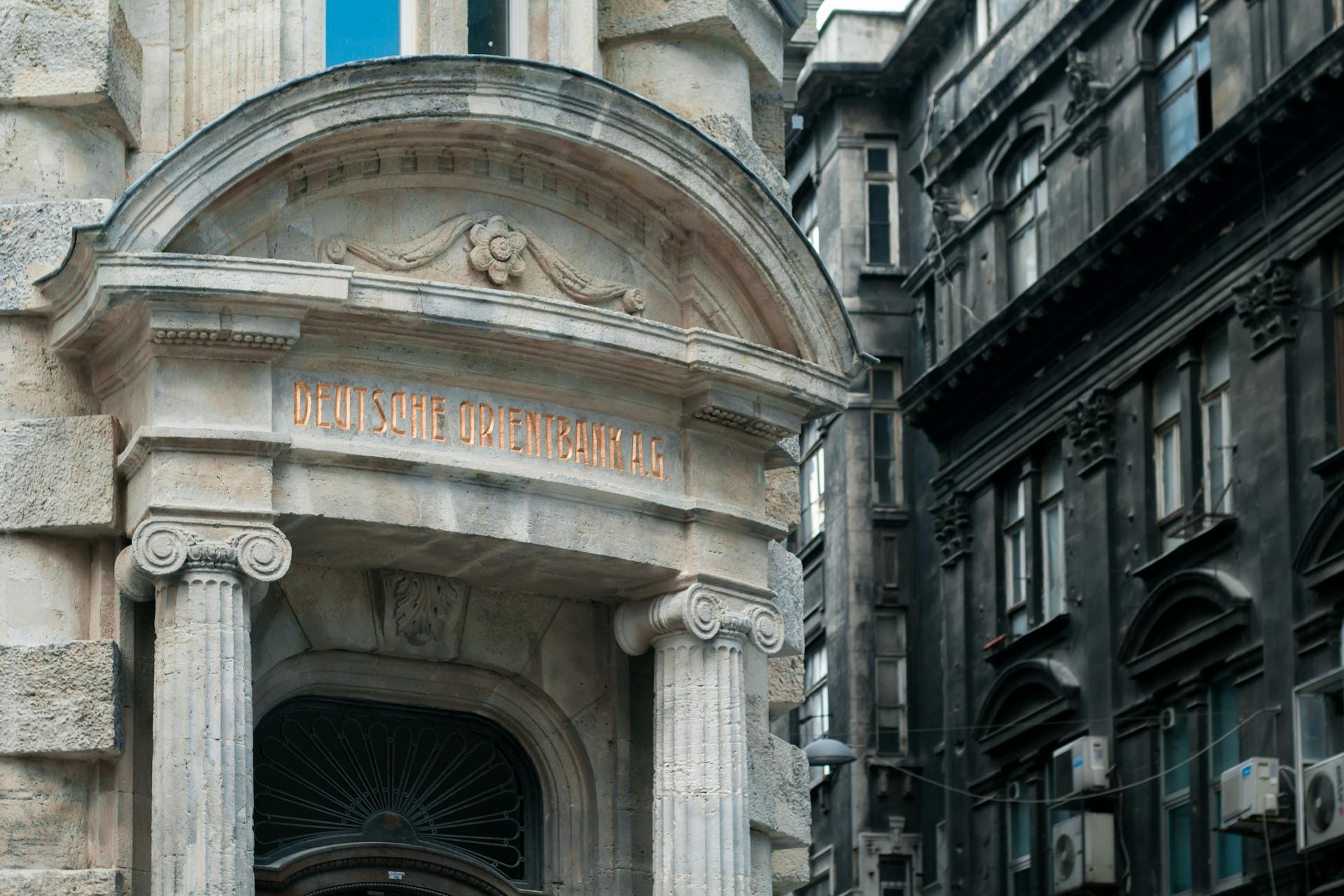
Art shipping insurance is a specialized type of insurance designed to protect valuable art pieces during transit.
The cost of art shipping insurance varies depending on the value of the artwork, its destination, and the level of coverage chosen.
Most art shipping insurance policies have a deductible, which is the amount you pay out of pocket before the insurance kicks in.
Typically, a deductible range is between 1% to 5% of the artwork's value.
As an art collector, it's essential to understand the terms and conditions of your insurance policy to ensure you're adequately protected.
You might like: Shipping Insurance for High Value Items
Assessing Risks and Coverage
Certain types of items are more likely to be stolen, such as those with brand names or high resale value. Avoid using brand boxes or boxes that may indicate what's inside.
Destination matters when it comes to shipping insurance, as some areas are more prone to theft and damage. Adding tracking and signature requirements can minimize risk, but carriers may still impose coverage limits.
Some art transport insurance policies may cover conservation and restoration costs in case of damage. This can include compensation for the loss of value or marketability of the artwork due to damage.
Wear and tear or gradual deterioration of artworks is often not covered by art transport insurance policies. This means you should take extra care to handle and pack your art to prevent damage.
Damage caused by intentional acts or negligence by the insured party is typically not covered. This highlights the importance of hiring a reputable fine arts transportation company to pack and transport your art.
Here are some common exclusions to be aware of:
- Wear and tear or gradual deterioration of artworks
- Inherent defects or flaws in artworks
- Damage caused by insects, rodents, mold, or mildew
- Damage caused by improper packing or handling by the insured party
- Damage caused by intentional acts or negligence by the insured party
- Damage caused by war, nuclear radiation, or radioactive contamination
It's essential to read your policy fine print and understand what's covered and what's not. This will help you take extra care with those particular types of risks and avoid any potential issues with your insurance claim.
Policy and Coverage Details
Your art shipping insurance policy will cover physical damage or loss of the object during transportation, as well as conservation and restoration costs in case of damage.
Worth a look: Does Hail Damage Claim Raise Insurance Rates
Make sure you read your fine print before signing, as exceptions and limitations may vary depending on your policy. Some common exclusions include wear and tear or gradual deterioration of artworks, inherent defects or flaws in artworks, and damage caused by insects, rodents, mold, or mildew.
Damage caused by improper packing or handling by the insured party is also typically excluded, unless a professional fine arts transportation company is hired to pack and transport the art.
In cases where you hire a professional fine arts transportation company, they may offer the insurance policy as part of their service, which can simplify the process and reduce the risk of issues arising.
If you decide to pack and transport the art yourself, be sure to follow best practices to minimize the risk of damage.
Here are some common exclusions to be aware of:
- Wear and tear or gradual deterioration of artworks
- Inherent defects or flaws in artworks
- Damage caused by insects, rodents, mold, or mildew
- Damage caused by improper packing or handling by the insured party
- Damage caused by intentional acts or negligence by the insured party
- Damage caused by war, nuclear radiation, or radioactive contamination
The policy limit is the maximum amount of money you will receive when you file a claim, so make sure it's not below the value of the works you're transporting.
Fine Art Shipping and Logistics
Fine art transportation is a highly nuanced element in fine art insurance policies, requiring attention to countless details to prevent damage.
Professional packing and shipping companies will often get input from the artist to understand the best way for a work to be handled.
Taking art off a wall, crating it, loading it in a truck or plane, uncrating it, and putting it back on a wall in a different location without having it suffer any damage is a complex process.
Art can be packed and shipped in various ways, from a padded envelope to a custom-fitted foam crate with its own microclimate.
In some cases, the owner will buy the artwork its own first-class seat on a commercial flight, with its courier seated right next to it.
The care with which art is packed and shipped runs the gamut, from basic to high-tech, and not all art is created equal, nor is the care in moving it.
For another approach, see: Art Etfs
Consider Risk
Certain items are more likely to be stolen, such as those that can be easily resold or pawned, higher-end brand names, and compact and easy-to-grab boxes.
To mitigate risk, avoid using brand boxes or boxes that may indicate what's inside. Destination matters too, as some areas are worse for theft and damage than others.
Traveling to areas with high crime rates can increase the risk of theft and damage. To minimize risk, add tracking and signature requirements to your shipment.
Some common risks during art transport include accidents or collisions, improper handling or packing, mechanical damage, fire or water damage, customs delays or confiscation, theft or vandalism, and war or terrorism.
Here are some common risks during art transport, listed in order of likelihood:
- Accidents or collisions during transportation
- Improper handling or packing of artworks
- Mechanical damage caused by large and/or sudden environmental fluctuations
- Fire, water, or weather damage
- Customs delays or confiscation
- Theft or vandalism during transit or storage
- War, terrorism, or civil unrest
The more stops a truck makes during transport, the more chances there are for damage. To mitigate damage, consider a non-stop shuttle or express shipment.
Here's an interesting read: Does Hail Damage Claim Raise Home Insurance Rates
Sources
- https://embracecreatives.com/artist-handbook/packing-shipping/insuring-artwork/
- https://conserv.io/blog/7-things-you-need-to-know-about-art-transport-insurance/
- https://www.risk-strategies.com/blog/fine-art-insurance-artwork-in-transit
- https://www.flastergreenberg.com/newsroom-articles-what-you-should-know-about-fine-art-transit-insurance.html
- https://www.artbusiness.com/how-to-pack-ship-insure-art.html
Featured Images: pexels.com


